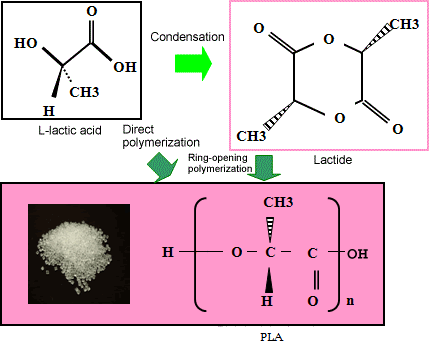PLA production process
Polylactic acid(PLA) is the most common bioplastic in use today. First, corn or other raw materials are fermented to produce lactic acid, which is then polymerized to make polylactic acid(PLA). Bioplastics are expected to make major contributions to environmental protection, because they reduce CO2 and because they are biodegradable. The range of applications for bioplastics is growing, from materials used in automobile interiors to packaging for foods and cosmetics, to agricultural sheeting, to household appliances.
We have our own technology for polymerizing lactic acid, and we provide licenses for this production process.
Production process for polylactic acid(PLA)
There are two methods for manufacturing polylactic acid(PLA) from lactic acid: the first method uses the cyclic lactic acid dimer called lactide as an intermediate stage; the second method is direct polymerization of lactic acid. The method using the lactide intermediary yields polylactic acid(PLA) with greater molecular weight.

Range of process response
